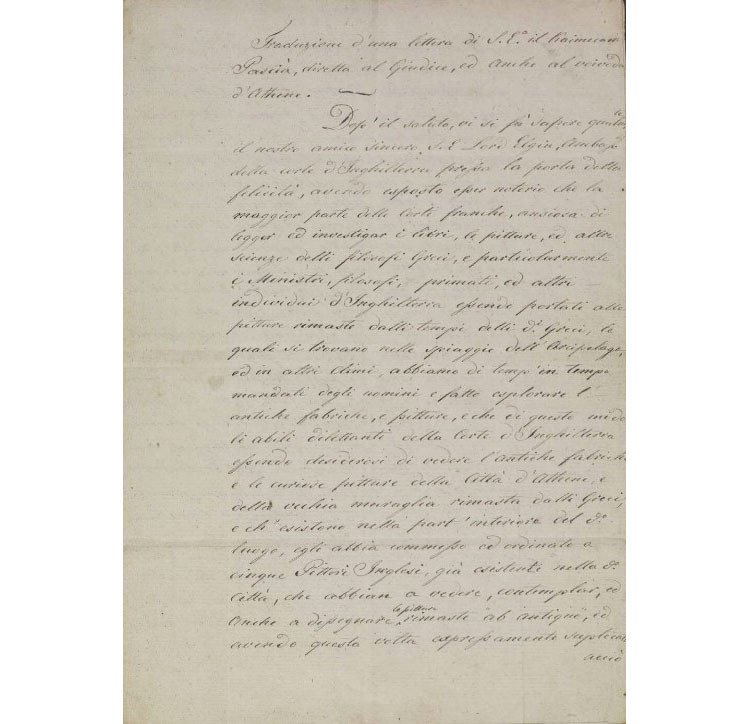Turkala Zeynep Boz, head of Turkey’s anti-trafficking anti-trafficking department, said she was unaware of the existence of a document legalizing this purchase.
He is unaware of the existence of an Ottoman document legitimizing Elgin’s actions regarding the Parthenon Sculptures, said the representative of Turkey, in an intergovernmental commission of UNESCO. The request for the return of the Sculptures is also supported by a document of Lord Byron showing what a firman of the time would have looked like, said the Nikos Stampolidis in the newspaper Kathimerini.
“We know nothing of Lord Elgin’s firman”
With the issue of the repatriation of the Parthenon Sculptures on its agenda for four decades, one would expect that the 24th Session of UNESCO’s Intergovernmental Commission on the Return of Cultural Property to the Countries of Origin (ICPRCP), which took place from 29 to May 30 in Paris, had no particular surprises. And yet: the United Kingdom joined the committee for the first time, having previously gone through the necessary process to be elected as a member; and Turkey, through its representative, took a clear position for the first time on the crucial issue of legalization of the purchase of the Sculptures by Britain in 1816 on the basis of an Ottoman document which Lord Elgin may or may not have had.
The reason for the famous “firmani”, which is mentioned on the British Museum site as part of the story of the removal of the Parthenon Sculptures and their sale to the British government with the approval of a British parliamentary committee. As can be seen from the video recording of the committee’s work, which is available on UNESCO’s YouTube channel, Turkala Zeynep Boz, head of the anti-trafficking anti-trafficking department of Turkey (which participated as an observer state in the intergovernmental commission of UNESCO), stated on the issue before the rest of the states: “We are not aware of the existence of a document which legitimizes this purchase, which was then made by the British colonialists, so I don’t think there is any room to discuss its legality even (…) according to the law of the time. We wholeheartedly look forward to celebrating the return of the Sculptors, as we believe it will signal a change in behavior towards the protection of cultural property and will be the strongest message to be sent worldwide.”
The Greek delegation and specifically the head of the International Law Department of the Ministry of Foreign Affairs, Artemis Papathanasiou, he thanked the countries that supported the Greek claims and especially Turkey (which has supported the request for return in other cases as well) for the fact that in the context of the committee session he raised a “very important issue” regarding the lack of a document to legitimizes the actions of Elgin and the then British government. In reply the United Kingdom reiterated its position that Elgin acted with the permission of the Ottoman authorities and in accordance with a firman given to him, of which an Italian translation survives, while there was also talk of a second permission, regarding the transfer of the Sculptures to England.
Read more at kathimerini.gr
Source :Skai
I am Frederick Tuttle, who works in 247 News Agency as an author and mostly cover entertainment news. I have worked in this industry for 10 years and have gained a lot of experience. I am a very hard worker and always strive to get the best out of my work. I am also very passionate about my work and always try to keep up with the latest news and trends.











